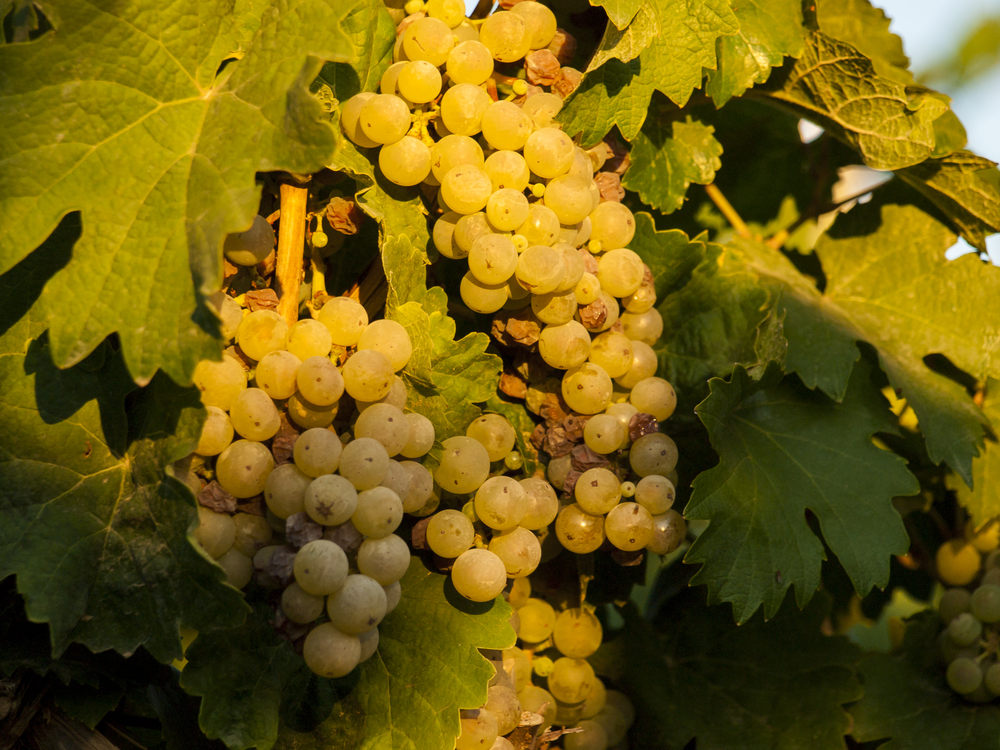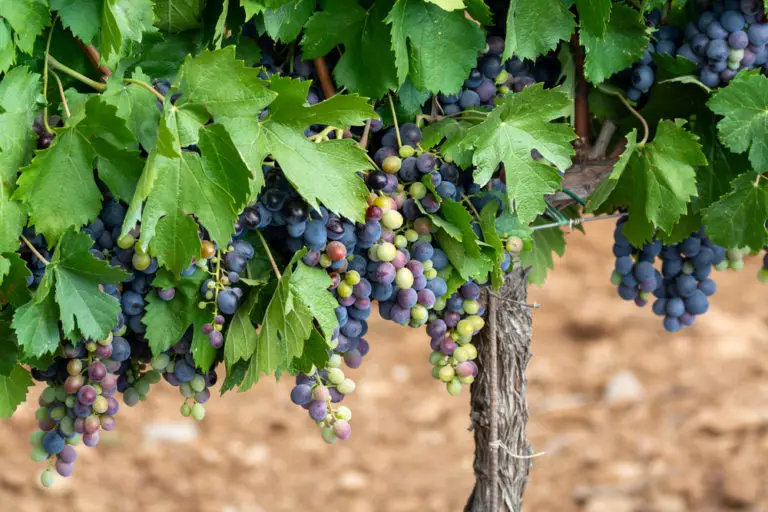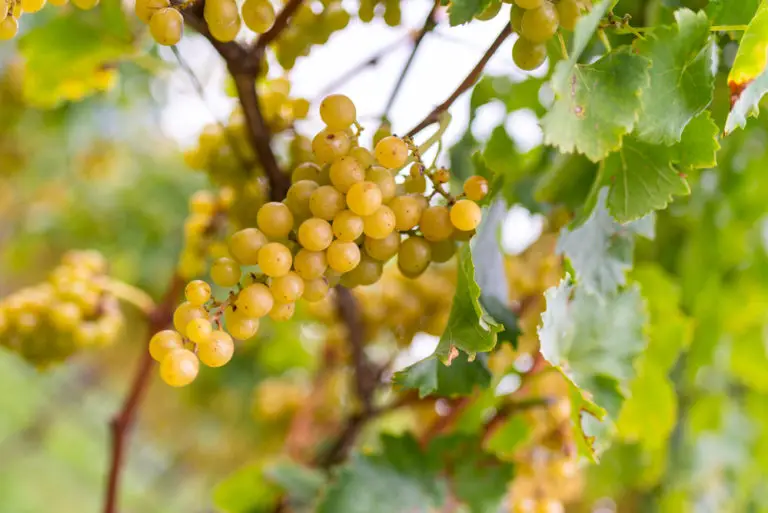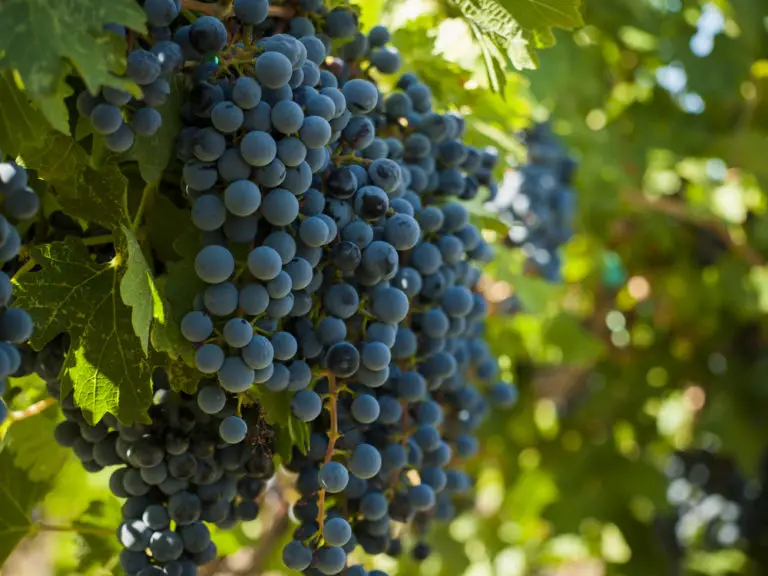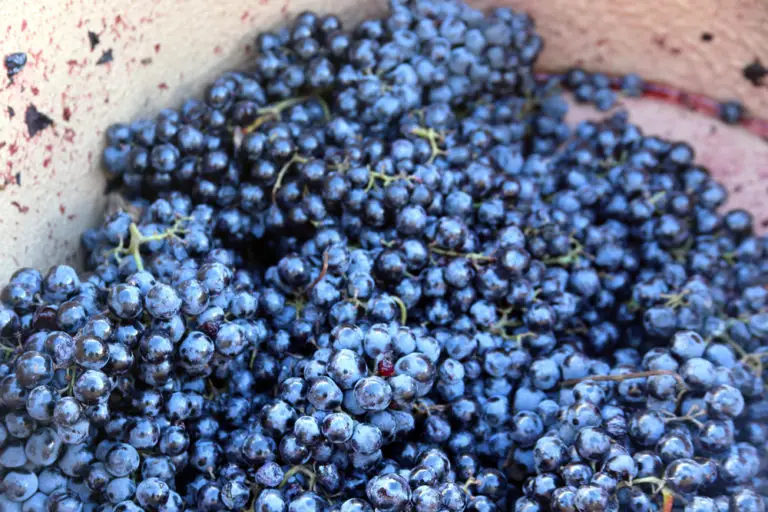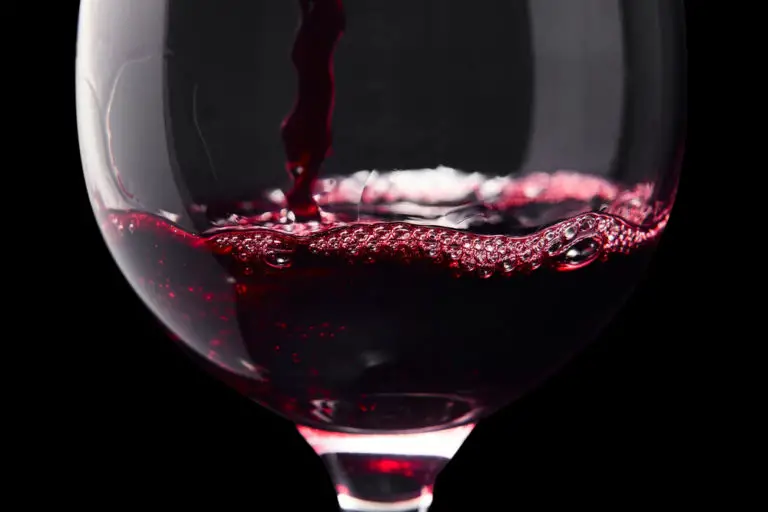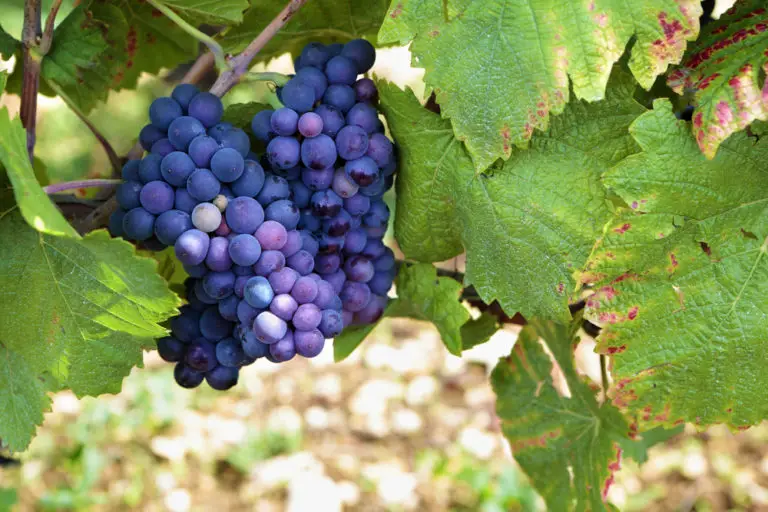Viognier: The Beginners Guide (2024)
Viognier wines are high-quality wines that have received more respect and attention in recent years and have been rediscovered internationally.
Wine connoisseurs and experts appreciate the white grape variety and covet these dry white wines for their lush and irresistible aromas. Grown on the steep terraces south of Lyon, Viognier wines show an expressive minerality and aromatic complexity.
- What is Viognier?
- Known Regions for Viognier
- Popular Blends of Viognier
- How to Enjoy Viognier?
- How is Viognier Made?
- History of Viognier
- Alternatives for Viognier
What is Viognier?
Viognier white wine is demanding, mildew susceptible, and only grows under optimal conditions. It needs sun and nutrient-poor, acidic deep soils such as limestone or granite and little wind, and no spring frost.
Viognier wines have been made for centuries, including in France, and only in the Condrieu, Château Grillet, and Côte Rotie areas. Viognier pronunciation is vee·o·nyay.
Even if the grape is very popular today, the vineyard area of the Viognier vine is only 6,000 hectares.
Once only pressed in the northern Rhône valley, today more widespread, in France from the foothills of the Massif Central to south of Lyon and also, in Languedoc, but also in the USA, in Australia, in Chile, and other countries.
Viognier is often vinified on its own, it is and remains the typical grape variety for one of the famous northern Rhône appellations: Condrieu.
Viognier vs. Chardonnay vs. Sauvignon Blanc
Viognier wine and Chardonnay are both full-bodied white wines that have a slight textural difference but very different aromas. Both are typically oak-aged to provide a creamy texture.
Chardonnay has a fruity aroma of yellow apple or citrus notes of pear and apple. On the other hand, viognier has a limey-tangerine note reminiscent of bitter citrus rind on the finish. It also has some bitter, almond-husky aromas on the finish.
Viognier in comparison with Sauvignon Blanc has less acidity and therefore, is easier to drink. Viognier has aromas of stone fruit and apricot and is mostly found in single Viognier varietal, whereas Sauv Blanc is used in blends and is responsible for keeping the wine racy and fresh.
Viognier Characteristics
The idiosyncratic grape loves more moderate climates. If the heat is too high, Viognier wines lose their freshness. The grape variety is quite demanding and a challenge for every winemaker, because it hardly forgives a mistake. The grape only grows under optimal conditions and, because of its late ripeness, needs perfect sunlight. That is why it thrives best on terraced steep slopes facing south and south-west, which are very difficult to work. Viognier alcohol content ranges from about 13.5%–15% alcohol by volume (ABV).
The Viognier characteristics are grateful for nutrient-poor, acidic, and deep soils and feel most comfortable on decomposed limestone, granite, and mica. If the soil is too fertile, the quality of the wine suffers and the yields have to be limited by thinning. To make matters worse, the Viognier vine is sensitive to wind and spring frosts.
A Viognier is full-bodied and flattering and velvety on the palate. A long, lingering finish marks the worthy end. The multi-faceted Viognier also has a lot to offer optically. In short – a wine for special moments that call for a special wine.
Viognier Taste Profile
Viognier wine shines in the glass with its strong golden yellow color and seduces with its complex Viognier profile: exuberant aromas, fragrant, and well-balanced acidity, wonderful harmony between fresh acidity and the flowery scents, on the palate then full-bodied and flattering and complete with a long finish the tasting.
It has a strong aroma of lush fruity aromas of apricot, peach, and mango, beguiling notes of white flowers and blossoms, violets, jasmine, narcissus, musk, honey, and spices.
On the palate, it is full-bodied, flattering, and velvety on palate, long-lasting finish, persistent aromas, often emphasized and supported by a touch of bitterness that gives the palate firmness. The Viognier taste is sensitive to oxidation and should not be stored after opening. A fine acidity rounds off Viognier wine harmoniously. Winegrowers like to use the vine for varietal wine but also often use it for cuvées.
Viognier Ageability
It is difficult to make a general statement about which wines are suitable for a maturation process. Because even if certain grape varieties have better or worse conditions for maturity, it is difficult to draw up a rule of thumb. In addition, there are enough counterexamples in which very long-lasting wines are also produced from less mature grape varieties through modern, sometimes very complex methods in the production process.
Nevertheless, it can be said that white wines are generally less intended to mature in the cellar for years. But, viognier is one wine that gives the best taste as they age. They are left to age until 15-20 years of age. Some wines are even-aged for up to 70 years. This process makes the wine smooth with strong aromas.
Notable Regions for Viognier
Connoisseurs from home and abroad have recognized the great potential of the aromatic variety and ensured an expansion of its cultivation area – initially on the northern Rhône itself, later also in southern France, America, and Australia as well as in numerous other wine-growing countries.
Only well-founded genetic engineering studies in recent years have shown that the Viognier grape in its current form most likely originated in the vicinity of the northern Rhône valley.
Northern Rhône
This stunning and beautiful Viognier region of France is divided into Northern Rhone and Southern Rhone. The main AOCs from this region are Côte-Rôtie AOC and Château-Grillet AOC. The Côte-Rôtie produces Viognier with 0% Syrah grapes and a minimum of 20% Viognier plantings. The Grillet appellation is a single winery of only 3.8 hectares.
Languedoc
This region of France contributes to one-third of the total French wine production. Languedoc produces the most french viognier, yet is not an official appellation. The grapes from this region become more interesting when blended with varieties like Roussanne, Marsanne, Chardonnay, and grenache blanc. The viognier wine price from this region is generally the highest as compared to other regions.
California
Outside France, California is the most successful producer of Viognier. Viognier here is mostly planted in the region of Sonoma, Central Coast, and Napa Valley. The wines produced here have a heady, perfumed character that takes a more of a tropical dimension, reminiscent of lychees. The wine produced here is balanced, rich, and full-bodied.
Chile
The primary region of Viognier in Chile is the cold Casablanca region. They exhibit a zippy, fresh quality which has a widely different taste than the one from America and France. They have an intense Viognier flavor of apricot, peach, and tropical fruits. The wine produced here has high acidity and alcohol levels.
South Africa
Viognier Paso robles is very famous in South Africa. This country embraces Rhone-style blends, which are used for adding aroma and texture. Some makers also make pure Viognier wines that are made using little out to provide them the right flavors and impart structure.
Popular Blends of Viognier
Viognier is used by winemakers for producing both single varietal wines and blends. They are added to enhance the flavors, colors, or even textures of some wine. Let us take a look at some of the popular viognier blends.
Colter’s Creek Estate
This white wine is a blend of 50% Chardonnay and 50% Viognier alcohol. This wine has the aromas of cut apple, petroleum jelly, and pear. It has 13.5 abv, is a full-bodied wine, and has a viscous feel.
Edio Robyn’s Blend Estate
This Viognier-Roussanne blend has lemon blossom aromas and lavish honeysuckle. They meet white peach flavors and luxurious Anjou pear in this mouth-filling, medium-bodied Rhône-style blend. It has 13.5% alcohol, yet it is not too fat. The lemon acidity of this blend keeps the palate and provides a fresh finish.
Three Pears
This blend from California is a blend of Chenin Blanc and Viognier abv. It is a light-bodied wine with a 12% alcohol content. It is fruity and crisp having a tempting and lean texture of kiwi, lemon, and pippin apple.
Terra d’Oro
This fruity blend of California is light-bodied, ripe, and easy to enjoy. It has a fruit bowl of Viognier flavor profile from pears to peaches. Its wine has tanginess and is dry, having a 12.5% alcohol percentage.
Yalumba The Y Series
This wine is a Shiraz-Viognier blend having notes of plum fruit and berry that swirl with dried herbs, peppery spice, and cola. It is produced in Australia and has an “angry” acidity and tannins. It has freshness, and richness of the fruit, which makes it special.
How to Enjoy Viognier?
Wines tend to be at their best when paired with the right food, served at an ideal temperature, and in the correct stemware. If this is not taken care of, then it can hamper the taste and aroma of any wine. Let us take a look at the best combination to enjoy a glass of viognier.
Food Pairings
This grape variety provides highly perfumed white wines that develop aromas of white flowers and fruits, dried apricots, peaches, and honey. For a Viognier wine pairing by resemblance, this grape is ideal for tasting white fish and pasta, slightly spicy and seasoned. Its unctuousness and volume on the palate elevate delicate dishes.
This grape gives a very interesting wine profile in high-altitude Viognier vineyards, such as Alto de Inazares, whose extreme altitude gives it a natural acidity and great balance, making viognier tasting notes ideal to pair also by contrast.
- Seafood: Scallops, crabs, or lobster are combined in a way exposing their sweet flavors.
- Fish: Especially with dishes prepared with grilled fish, its flavor is combined creating a delicious sensation.
- Spicy Dishes: Any spicy dish is combined generating an explosion of flavor.
- Meats: A plate of grilled white meats accompanied by a glass of Viognier generates a lot of flavors.
- Cheeses: Especially with those mature cheeses, their flavor is harmoniously balanced.
- Asian Food: The perfect ally to enjoy Asian dishes enhancing their flavors.
- Desserts: Especially with those elaborate desserts.
Temperature
Taking care of the serving temperature will directly influence how the aromas of the wine are perceived.
At low temperatures, the aromas of the wine are masked and are more difficult to perceive. In addition, flavors that may not be appropriate are enhanced (bitter, salty, etc.).
On the other hand, at slightly higher temperatures a better perception of the aromas is achieved, although an excess can cause the alcohols and the burning of the wine to be enhanced. There is also an enhancement of sweet flavors, and this may not be interesting.
Be that as it may, enjoy your cool white wine. Remember, between 4ºC and 9ºC, depending on the type of white you are going to enjoy. It is recommended to drink Viognier at 8°C and 10°C.
Stemware
Elegant, sophisticated, slim, and robust at the same time. So are the types of glasses for drinking wine. The main difference between the types of wine glass is their size, but there are more characteristics that we must pay attention to when analyzing what type of glass it is. Size, shape, diameter, and stem play a vital role in the selection.
The ideal glasses for white wines are smaller than those for red wines. Its bowl has a straight and thin ‘U’ shape. White wines are usually drunk at cold temperatures, and, in addition, it is convenient to drink them in smaller glasses so that they do not get hot.
- The Peugeot Paris Bouquet collection: Designed and developed with the expertise of winemakers and sommeliers, the Peugeot Paris Bouquet collection allows you to fully enjoy the expression of wines while highlighting their most subtle details. Unmistakable for the glass ring that marks the union between shaft and ball, the Paris Bouquet collection is made of lead-free crystalline glass.
- Maca Cristar Glasses: The set of glasses for white wine from Maca Cristar is an opportunity to expand your glassware with containers specialized in the presentation of white wines for connoisseurs. They have a body made of high purity glass with a robust and resistant foot that provides sufficient stability, in addition to a 7½ content capacity.
How is Viognier Made?
Winemaking is a process that over the years has reached a level of complexity and outstanding quality standards. Everything revolves around the fermentation of grape juice. Let’s see what the Viognier wine-making process consists of through its different steps.
1. Harvest
The harvest is the grape harvest that traditionally takes place between September and October. The level of sugar in the grapes is particularly important since the fermentation and alcohol level of the wine will depend on it. Two different processes are used in the production of red wine: carbonic maceration (elaboration with the whole bunch) and destemming / crushing (shelling the bunches).
2. Destemming
The destemming process is the one by which the grapes are separated from the rest of the bunch, which is known as stalk. The objective of separating the grapes from the branches and leaves is to avoid bitter flavors and aromas to the must during subsequent maceration. The grape grains are passed through a crushing or threading machine.
3. Maceration and Fermentation
They will be kept at a controlled temperature, marinating for a few days. This process is of great importance since, in addition to allowing fermentation, it allows the must to acquire its Viognier color, as well as other characteristics, through contact with the pigments of the skins. Both the Viognier wine color and the final structure of the wine will be determined by these elements provided by the skin.
4. Pressing and Aging
After the discovery, the solid product of the fermentation still contains large quantities of wine, so it is subjected to a pressing to extract all the liquid, obtaining the pressed wine, rich in aromas and tannins, which is not mixed with the obtained wine. in the discovery.
These two wines will be used to make different products. After fermentation, the wine obtained is introduced into oak barrels. The wood for the elaboration of barrels is selected mainly for its properties of hardness, permeability, and porosity.
Bottling
During this time, the wine will evolve in a reducing atmosphere and will assimilate the oxygen that inevitably enters the bottle when it is closed with the cork. Aging in the bottle is also important as it allows the wine to stabilize and the aromas and properties it has acquired in the barrel to find a point of balance and harmony.
History of Viognier
The origin of the Viognier grapes is still unknown, but some believe it was brought to Europe by the Roman Emperor Probus. More precisely in Dalmatia, a region of Eastern Europe. For others, it would have been taken to the Rhône River region by the Romans.
The Viognier name was already quite grown, but this variety was almost extinct in 1965 in France. The planted area reached only 8 hectares in the micro-region of Condrieu. This decline was a result of the pest phylloxera, an aphid that attacks the roots of vines and impedes the distribution of nutrients to the plant. And as if that wasn’t enough, the vines were soon abandoned due to the First World War.
After this period of decline, starting in the 1990s, the Viognier grape has been widely cultivated around the world, in countries like Italy, Brazil, Switzerland, Canada, New Zealand, and many others. Viognier history was then created.
Alongside this, the Viognier plantation has also grown significantly in France. Thus, this variety has become an icon of the north of the Rhône River, a region where delicious wines are produced.
Alternatives for Viognier
There are some alternative wines that you must try if you love drinking Viognier. They have shared some similar properties and, therefore, make them a perfect alternative on any day you want to try something different. Here are the details about three such wines: Chardonnay, Pinot Grigio, and Torrontes.
Chardonnay
Chardonnay is one of the most known and cultivated white grape varieties in the world. It tends to take on the character desired by the manufacturer: lively and sparkling, fresh, rich and buttery, even sweet. The result is a fresh, delicate, fruity wine with high alcohol content, both still and sparkling, particularly suitable for refinement in barrique and aging.
Pinot Grigio
Pinot Grigio is a fresh and light-bodied wine with a high acidity rate. The taste of Pinot Grigio differs according to the production area. In places with a constant and cold climate, a wine with excellent body and structure and a velvety and soft flavor will be obtained, while if the place is characterized by considerable temperature variations, Pinot Grigio will have a fruity flavor and a strong body.
Torrontes
Torrontés is a white Argentine grape variety that produces fresh, aromatic wines with medium acidity and a smooth texture. The aromatic range of wines made from Torrontés grapes can include descriptors such as pineapple, rose, jasmine, orange blossom, manzanilla, tangerine, honey, nutmeg, peach, orange peel, and fresh oregano.
FAQ
What does Viognier taste like?
The distinctive features of the Viognier grape are the aromas of Jasmine and spring blossom, and the fruity flavours of peach and apricot.
What is the difference between Chardonnay and Viognier?
Chardonnay is explosive in the beginning and ends on a savory, creamy note, whereas, viognier has a softer start that builds a limey-tangerine note, reminiscent of bitter citrus rind on the finish.
What is a good Viognier wine?
A good Viognier will have a heavy mouthfeel with floral aroma and a creamy texture. It will also be low in acid and citrus flavours.
Does Viognier age well?
Some Viognier that are from old vines and late-harvest are suitable for ageing. Most wines are intended to be consumed young.
Is Viognier served chilled?
Ideally Viognier should be served at 52F, or cooler than the room temperature. It lets the rich flavours of wine be enjoyed at its best.
Is Viognier good for cooking?
Viognier goes well for cooking dishes with bold or spicy flavors as the wine is aromatic. The exotic floral aromas of viognier counterbalances heavily spiced dishes.

